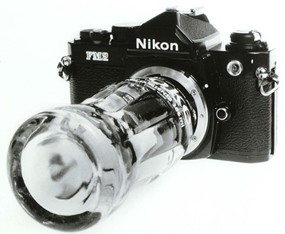Pro photographers do not rely on one zoom lens, even if it could cover 18-800 with one flick. Pro photographers will have many lenses, but there will be enough prime lenses to almost cover that 18-800!
One of the questions professional photographers often get asked is, “What lens would you use to shoot a (insert the subject)?” However, the lens a pro selects depends upon many factors, and the subject being shot is only one of the important ones!
If that sounds confusing, do not worry, it will become more clear as you read on. You see, you can get a shot of your pet subject using any old bit of glass on the front end of your camera. In some instances, you can almost get the identical looking shot of the subject with a 28 mm lens, a 50 mm or a 135 mm. By now you are saying, why have all these different lenses if the shots look all the same? The essential word here was “almost” the same. There will be tell-tale differences and it is these differences that make or break your photographs. By using the differences you can manipulate the shot to produce the effects you want.

Right then, let’s get down to some examples. You are on a tropical beach, Bang Saray will do, and you want the blue skies over the sea type of picture. Unfortunately, the sky is only pale blue. What to do? The lens to use to increase the blue color of the sky is the widest angle lens you have got in the bag. How does this work? Simple, you are taking an enormous area of sky with the wide angle and compressing it into the small 35 mm equivalent in digital terms. Compressing all that sky increases the depth of the color and makes it more blue than it really was!
Another example, you have just bought a car and want to send a photo of it to your relatives at home. You want them to be jealous. You want it to appear as imposing as possible. What to do? Leave the wide angle lens on and get down low and close to the car. Look through the viewfinder and the car suddenly looms large and powerful above you. The closer you get, the more it looms above you. Click! It is in the bag of pixels and on its way to impress the relatives.
This time you want to take a photograph of your house to go in a real estate catalogue. Unfortunately there is a new house being built at the back, and no matter what angle you take it from there are piles of rubbish in the background. This one is even easier. Use a long lens (135 mm and upwards) and take the shot. With the short depth of field available with the longer lenses, especially with wide open apertures, the rubbish dump will turn into a nice blurry, soft, out of focus background, and no one will ever know you are living in Soi Building site.
What about a nice close up of your favorite painting you bought? Another “genuine” Sunflowers by Van Gogh bought in Walking Street. Will you use a close-up lens or the wide angle setting on the zoom lens? No, you should use the telephoto long lens and stand back. If you go in close with the wide angle you will get distortions at the edges and strange shadows across the canvas because you physically get in the way of the light. With the long lens there is less distortion and the light will fall evenly across the picture.
Mind you, there are times when the subject being shot does dictate the lens you would use. Let me assure you that when photographing man-eating pumas I would use the longest lens in the world. A close up lens to photograph its dental work would not be my idea of fun!
So there you are, think about the effect you want, rather than just the subject matter when deciding what lens to choose. And finally look through the lens to ensure that you are getting what you want.




